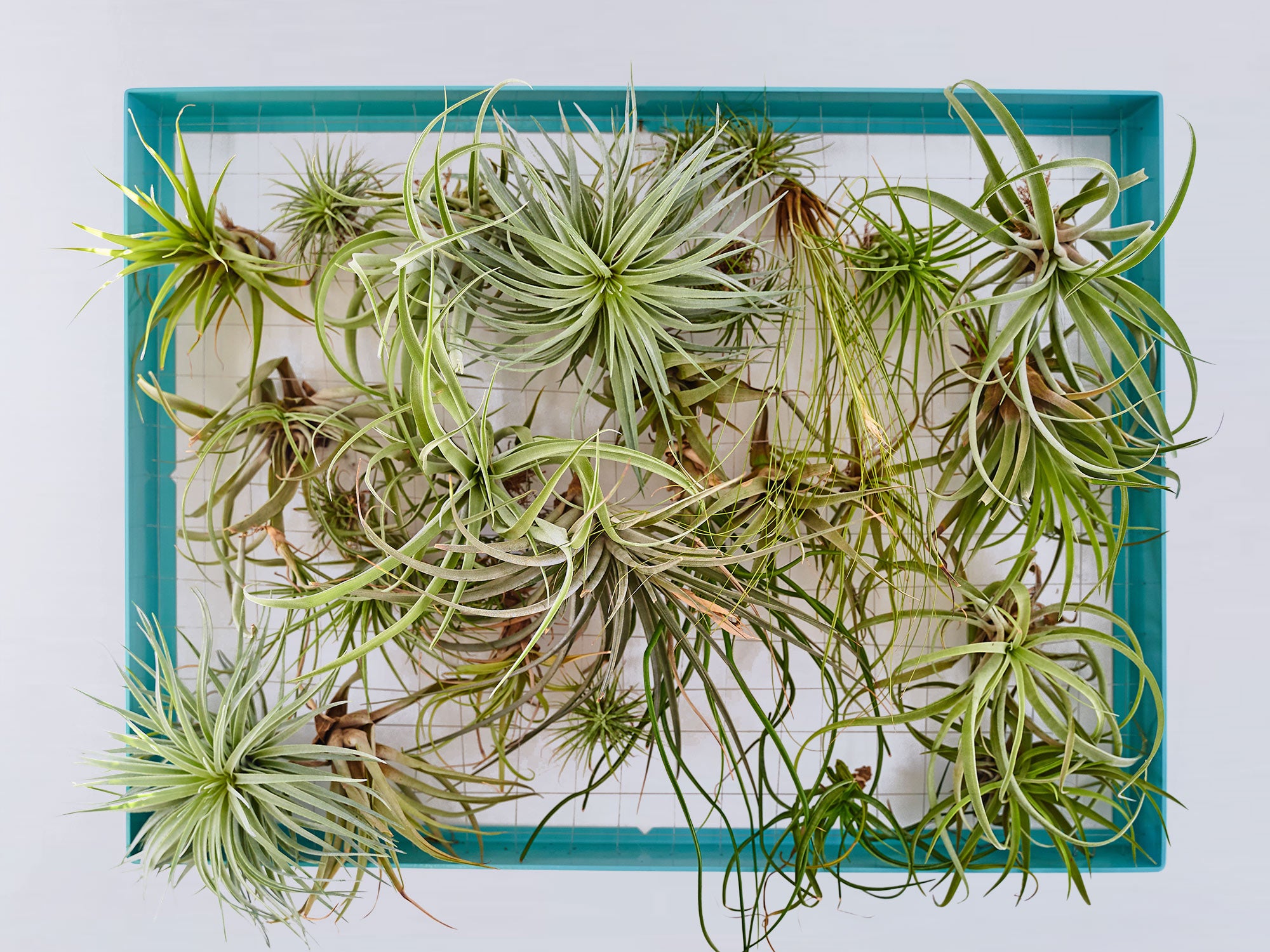The Joy (and Care) of Air Plants

EXTRAORDINARY EPIPHYTES
My fascination with air plants started about a decade ago when I was living in LA. Before I got into working with plants professionally, I was a hard-core hobbyist who was lucky enough to live close to about a half dozen inspiring growers and purveyors. One of these, Rainforest Flora, turned out to be one of the biggest growers of air plants in the world. I wandered into their greenhouse one day and was instantly captivated by the the alien like plants I saw growing over a half acre or so, just a short bike ride from my apartment. I started my collection that day and haven't stopped! Over the years, I've found that the best way to display them is on frames and stands, so they can be displayed like the living works of art that they are.
Air plants, or tillandsia, belong to an extraordinary group of plants called epiphytes that require absolutely no soil in order to grow. In their natural habitat, air plants can absorb all the water and nutrients they need via special cells called trichomes. Like all plants, tillandsia require sunlight in order to perform photosynthesis and based on where their native environments are, they can be split into two main groups: xeric and mesic. Xeric varieties come from arid climates, such as deserts in the southern United States and Central and South America. These xeric species tend to have a silvery grey coloring that allows them to reflect light and conserve water. The mesic varieties, on the other hand, hail from woodlands and rainforests, where they receive less light and more water; as a result, they tend to have smooth green leaves to maximize light and water absorption.

HOW TO KEEP AN AIR PLANT HAPPY (INDOORS)
Air plants need moderate indirect light; mine thrive in a spot on a wall in between two south facing windows. To care for them, simply submerge and soak in water for at least an hour—overnight if you can—every 7-10 days. People tend to be surprised you can submerge airborne plants underwater, but they love it! A long soaking time is key, as is making sure your air plant varieties with a center rosette that collect water (like the xerographica) get turned upside down and gently shaken to remove the water. If water is allowed to stay in the center rosette for an extended period of time, this will cause the plant to rot.
SOME OF MY FAVORITE VARIETIES
Tectorum: The fuzziest air plant with the most unique texture we know of.
Stricta: Beautiful form and hardy enough for apartment conditions.
Butzii: Wild form looks great as a stand-alone specimen.
ABOUT THE AUTHOR, Kristin Monji
Kristin is a professional horticulturist who’s worked with a wide variety of plants both indoors & out in NYC and LA for over eight years. She’s an ISA certified arborist and Director of Horticulture at Greenery NYC. She is an avid collector of succulents and tillandsia.


